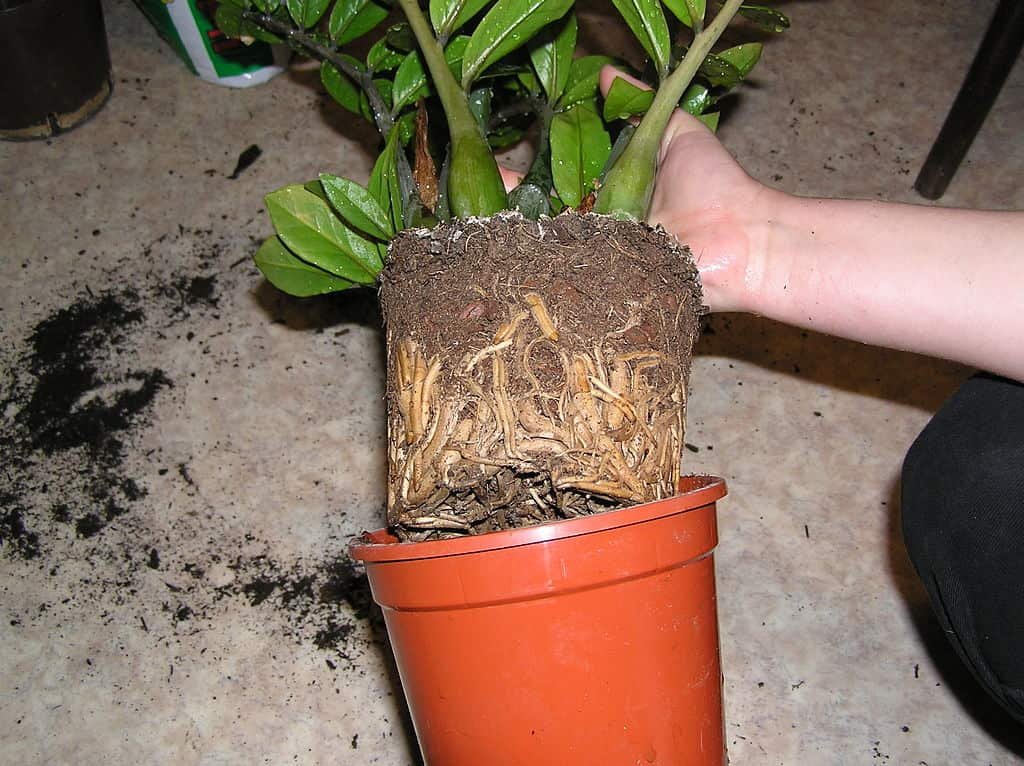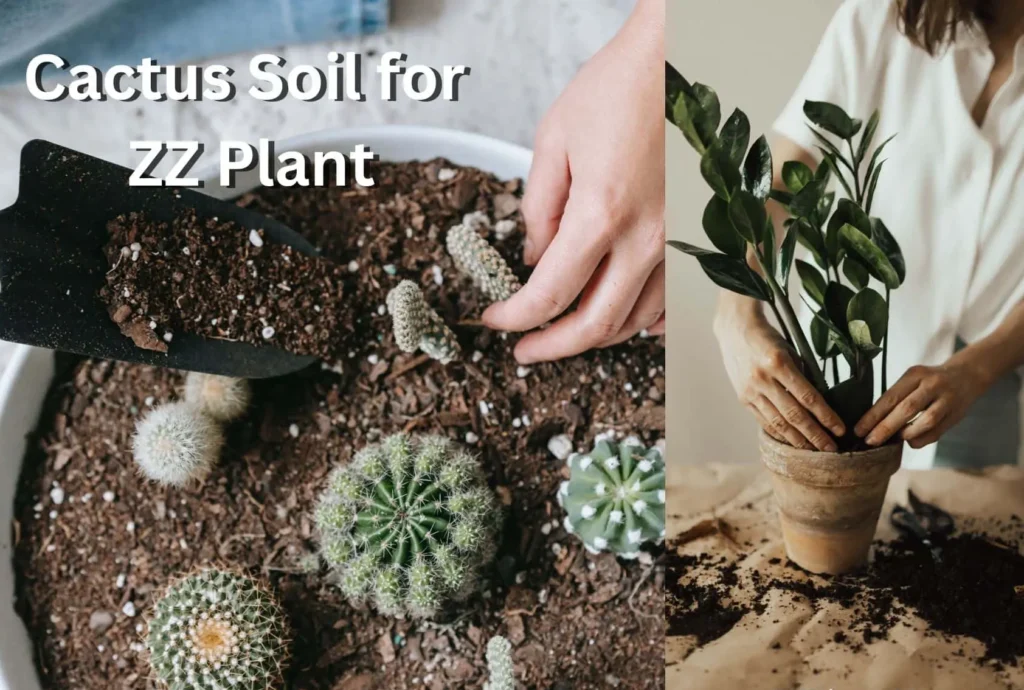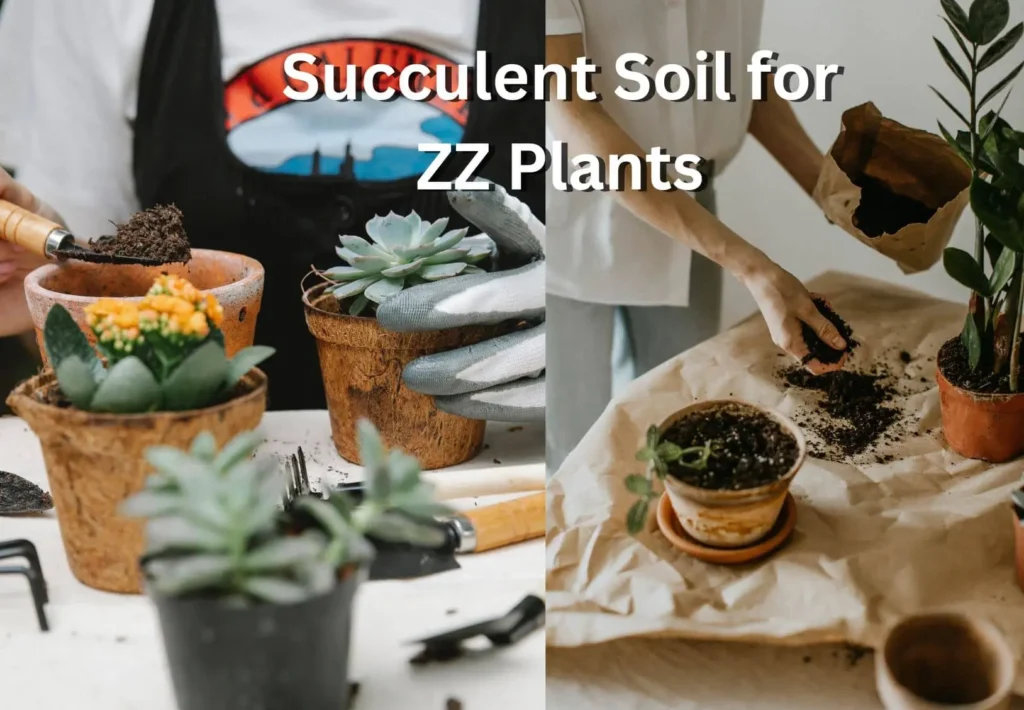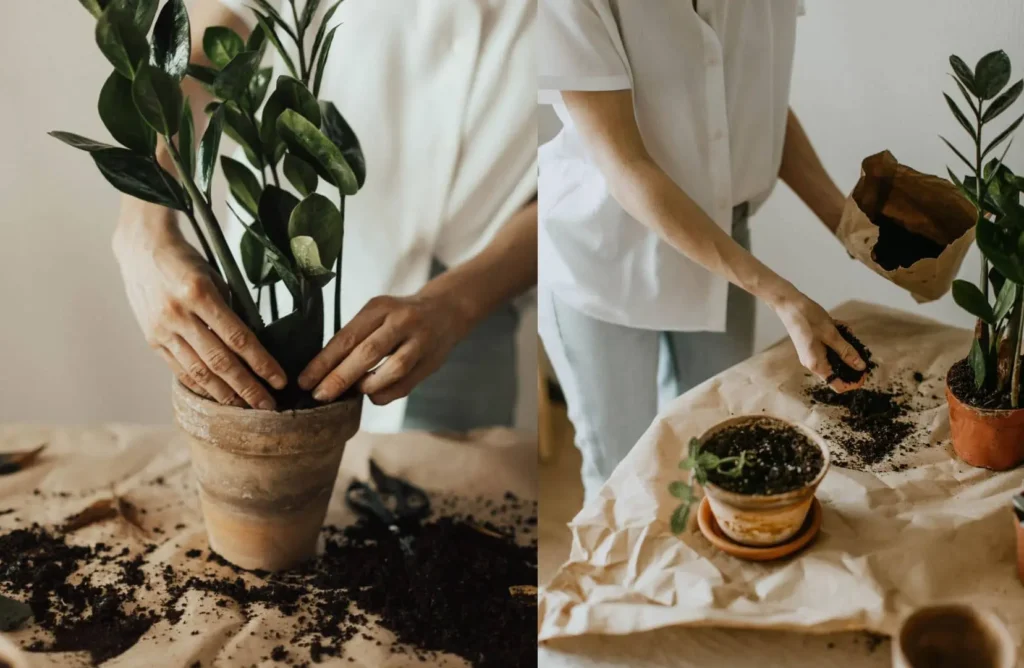When it comes to caring for indoor plants, providing the right growing medium is crucial for their health and well-being.
The ZZ plant (Zamioculcas zamiifolia) is a popular choice among plant enthusiasts due to its striking appearance and low-maintenance nature.
However, determining the ideal soil type for your ZZ plant can be a bit confusing, especially if you’re considering using cactus soil.
In this comprehensive guide, we will explore whether cactus soil is suitable for ZZ plants and provide insights into the best soil options for these resilient houseplants.
Understanding the ZZ Plant
Before delving into the topic of soil, let’s first understand the ZZ plant itself. Native to eastern Africa, the ZZ plant has become a favorite among plant lovers because of its attractive glossy leaves and ability to thrive in various conditions.
It is well-known for its ability to tolerate neglect, low light levels, and drought.
However, to ensure its long-term health, providing the right growing conditions, including suitable soil, is essential.
Importance of Soil for ZZ Plants

The soil you choose for your ZZ plant affects its overall health and growth.
The right soil composition promotes healthy root development, ensures adequate drainage, and provides the necessary nutrients.
It is crucial to strike a balance between moisture retention and good drainage to prevent root rot and other issues.
Characteristics of Cactus Soil
Cactus soil is specifically formulated to meet the unique needs of desert plants that require excellent drainage and minimal water retention.
It typically consists of a blend of materials such as sand, perlite, pumice, and peat moss.
Cactus soil has a coarse texture, allowing water to flow through quickly, preventing the roots from sitting in excess moisture.

Can I Use Cactus Soil for ZZ Plant?
Yes, you can use cactus soil for a ZZ plant, but it may not be the ideal choice. While ZZ plants are known for their drought tolerance, they have different requirements compared to desert-dwelling cacti.
Cactus soil is designed to provide excellent drainage and minimal water retention, which is suitable for desert plants that need to avoid excess moisture.
However, ZZ plants, native to tropical regions, prefer slightly more moisture-retentive soil.
Using cactus soil for a ZZ plant may result in the soil drying out too quickly, potentially leading to dehydration and stunted growth.
It’s important to strike a balance between moisture retention and drainage to ensure the plant’s health.
If you decide to use cactus soil for your ZZ plant, consider amending it to improve moisture retention.
You can add organic matter such as coco coir or peat moss to increase the water-holding capacity of the soil without compromising drainage.
This modification will help create a more suitable environment for the ZZ plant’s root system.
Alternatively, it’s recommended to use a well-draining houseplant mix or create a custom soil blend that provides a balance between moisture retention and drainage.
A mixture of regular potting soil, perlite, and peat moss in equal parts can be a good option for the ZZ plant’s soil mix.

Also, read about: Can I Use Succulent Soil for ZZ Plant? A Comprehensive Guide.
Ideal Soil Mix for ZZ Plants

To create a suitable soil mix for your ZZ plant, you can incorporate a few key components. Consider a blend of regular potting soil, perlite, and peat moss.
Potting soil provides the necessary structure and nutrients, while perlite improves drainage and aeration. Peat moss aids in moisture retention without allowing the roots to become waterlogged.
Mixing these ingredients in a 1:1:1 ratio can create a balanced soil mix for your ZZ plant.
For details, read another post about ZZ Plant Soil Mix Recipe: To Grow Healthy Plants.
Alternative Soil Options
Apart from the ideal soil mix mentioned above, there are a few alternatives you can consider for your ZZ plant:
- General-purpose potting soil: General-purpose potting soil is a good option for ZZ plants, but it is important to make sure that the soil is well-draining.
- Well-draining houseplant mix: Opt for a well-draining houseplant mix available in most garden centers. These mixes are specifically designed for indoor plants and offer a good balance between moisture retention and drainage.
- Succulent and cactus mix with amendments: If you prefer a soil mix closer to cactus soil, you can modify it by adding amendments to enhance moisture retention. Incorporate organic matter such as coco coir or peat moss to increase water-holding capacity without compromising drainage.
- DIY soil mix: If you prefer a hands-on approach, you can create a customized soil mix by combining equal parts of potting soil, perlite, and coco coir. This mixture provides adequate drainage and moisture retention for your ZZ plant.
- African violet potting soil: African violet potting soil is another good option for ZZ plants. This type of soil is typically more nutrient-rich than general-purpose potting soil.
- Orchid potting mix: Orchid potting mix is a good option for ZZ plants if you are looking for a soil that is very well-draining.
The best type of soil for your ZZ plant will depend on your individual preferences and the conditions in your home.
Caring for ZZ Plants
While soil plays a crucial role in the health of your ZZ plant, there are other factors to consider for optimal care:
- Light: ZZ plants tolerate low light conditions, but they thrive in bright, indirect light. Avoid exposing them to direct sunlight, as it can scorch the leaves.
- Watering: ZZ plants prefer slightly dry conditions. Allow the top few inches of soil to dry out before watering. Overwatering can lead to root rot, so it’s better to underwater than overwater.
- Temperature and Humidity: ZZ plants are adaptable to a wide range of temperatures. They prefer average room temperatures between 65-75°F (18-24°C). They can tolerate lower humidity levels, making them suitable for various indoor environments.
Related FAQs:
Using cactus soil alone for your ZZ plant is not recommended. Cactus soil has excellent drainage properties but lacks moisture retention, which may not meet the ZZ plant’s requirements. It is best to mix cactus soil with other components to create a balanced soil mix.
Cactus soil is formulated for desert plants that require minimal water retention and excellent drainage. ZZ plants, on the other hand, prefer slightly more moisture-retentive soil. Using cactus soil alone may cause the soil to dry out too quickly, leading to potential dehydration and growth issues for the ZZ plant.
Cactus soil typically consists of a blend of materials such as sand, perlite, pumice, and peat moss. It has a coarse texture and provides excellent drainage, allowing water to flow through quickly. Cactus soil is designed to prevent the roots of desert plants from sitting in excess moisture.
The best soil mix for ZZ plants consists of a blend of regular potting soil, perlite, and peat moss in equal parts. This mixture provides the necessary nutrients, good drainage, and adequate moisture retention for the ZZ plant’s optimal growth.
Yes, you can amend cactus soil to make it more suitable for ZZ plants. Adding organic matter such as coco coir or peat moss to the cactus soil will improve its moisture retention capacity. This amendment will create a better balance between drainage and moisture for the ZZ plant’s root system.
Yes, if you prefer alternatives to cactus soil, you can consider using a well-draining houseplant mix available at most garden centers. These mixes are specifically designed for indoor plants and offer a good balance of moisture retention and drainage. Additionally, you can create a DIY soil mix by combining equal parts of potting soil, perlite, and coco coir for your ZZ plant.
Conclusion
While cactus soil may be excellent for desert plants, it is not the ideal choice for ZZ plants. ZZ plants prefer a soil mix that retains slightly more moisture.
By using a well-draining houseplant mix or creating a DIY soil blend, you can ensure the proper balance of moisture retention and drainage.
Remember to consider other factors such as light, watering, and temperature to provide optimal care for your ZZ plant.
With the right soil and care, your ZZ plant will thrive and add beauty to your indoor space for years to come.

